Moving things over water has always been easier than moving them overland, whether those things are people or cargo and whether that water is the salty or fresh variety. Particularly before railroads and cars arrived, rivers were the superhighways of commerce. And commerce is almost always followed by military force. I've previously discussed the history of riverine warfare in North America, but its use was hardly isolated to that continent.
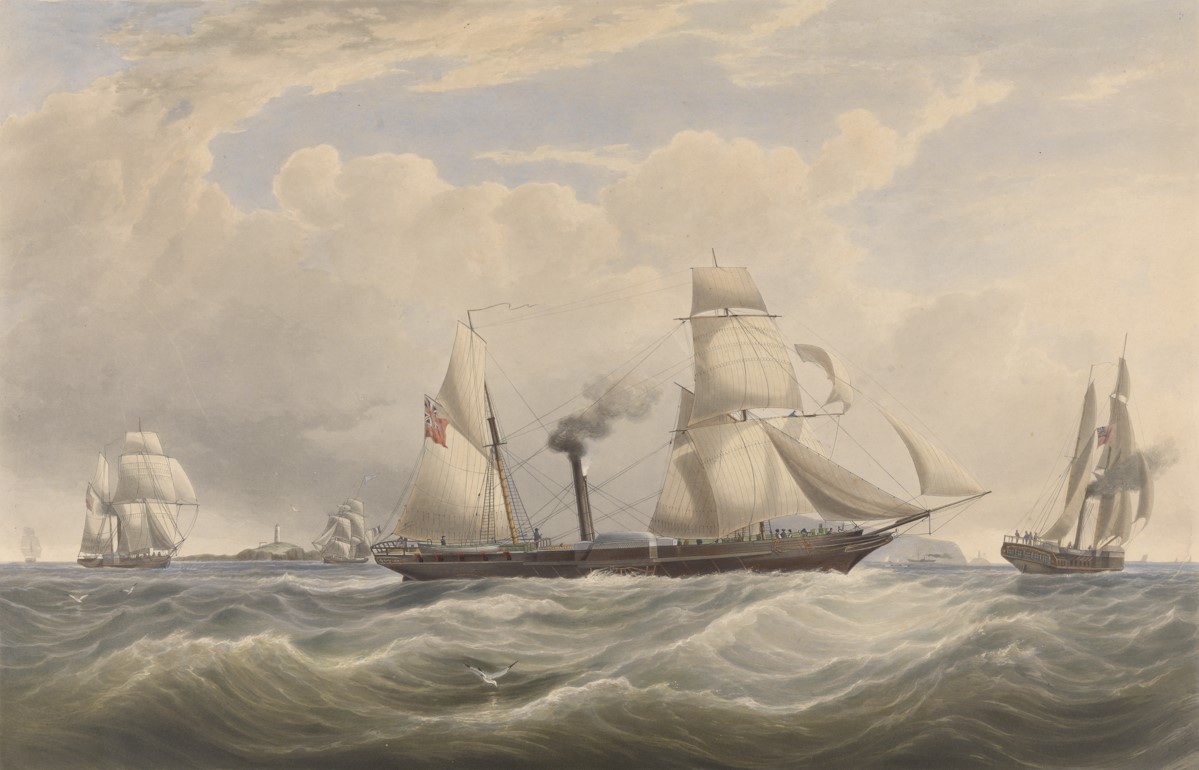
The ships of the 1841 Niger Expedition
Africa was a particularly fertile ground for riverine seapower. Its history on that continent goes back to the days when man was first learning to use rafts, and the Nile has a long history of military uses, but these fall outside the scope of this post.1 The initial European colonization of the continent was almost entirely restricted to the coast, and rivers provided the only natural arteries for penetrating into the interior. The first major example of this was the 1841 Niger River expedition, which included three iron-hulled paddle steamers, some of the first vessels of that type in RN service. Britain and France each built a few gunboats for the river systems of West Africa, some of which had such shallow hulls that they had trusses built above the deck. Many of these vessels had drafts of only 1-2', and when they got stuck, the locals would be hired to pull the ship off.
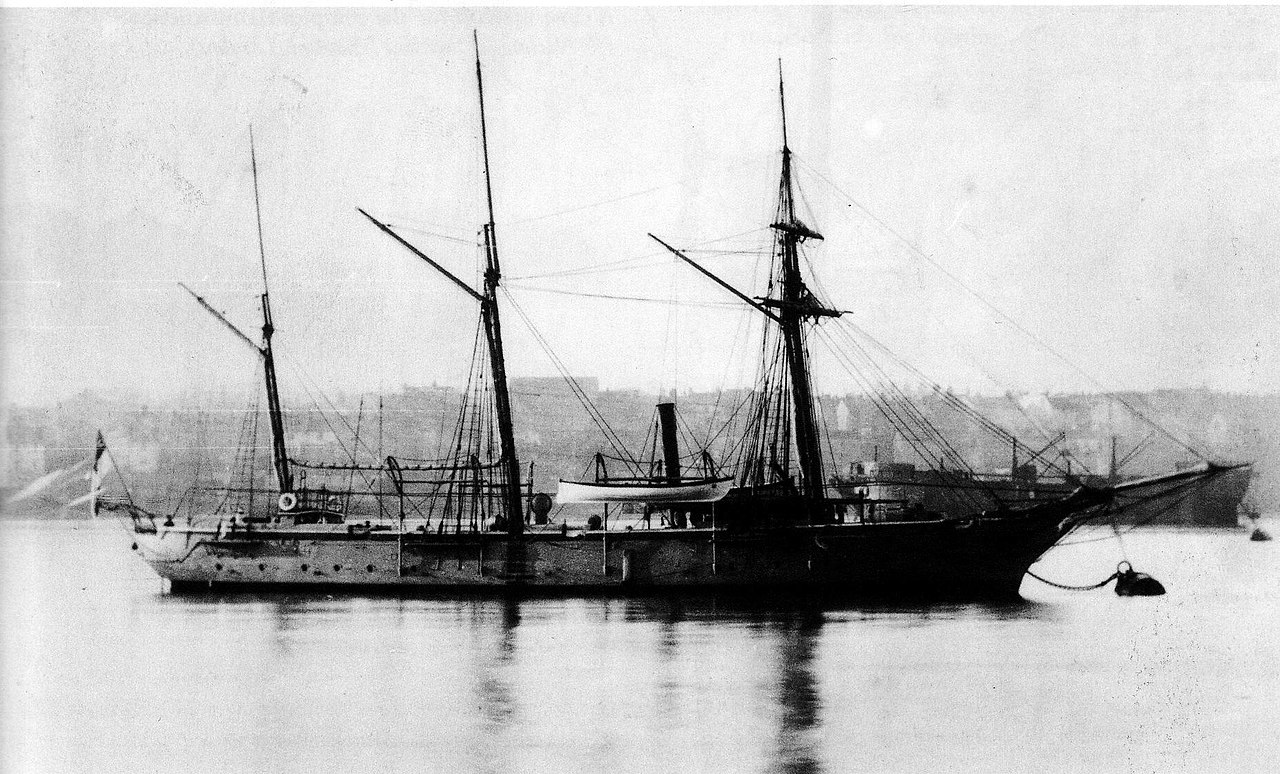
HMS Foxhound, of the Forester class
Sometimes, more firepower was needed, and ocean-going gunboats, such as the Beacon and Forester classes would be dispatched upriver. These drew considerably more water, which obviously limited their mobility. On the other end of the spectrum, there were important navigable waters that were blocked from oceanic access by obstacles that couldn't be bypassed, such as waterfalls. To get boats to these areas, vessels were designed that could be prefabricated and assembled on-site. In some cases, railroads ran to the river or lake in question, but most of these boats were broken down into hundreds or thousands of loads that could be carried by native porters. On arrival, a primitive shipyard would be constructed to assemble the whole thing. Some of these inland gunboats operated under incredibly primitive conditions. The French gunboat Niger, on the upper reaches of the river of that name, was originally designed to burn coal, but it proved impossible to provide a reliable supply. Instead, the boiler was modified to burn wood. The problem was that it went through about a cubic meter an hour, and the boat could only carry 10 m3. Refueling was a simple matter of pulling up along the bank and chopping down trees, but it left the crew vulnerable to attack while they were doing so.
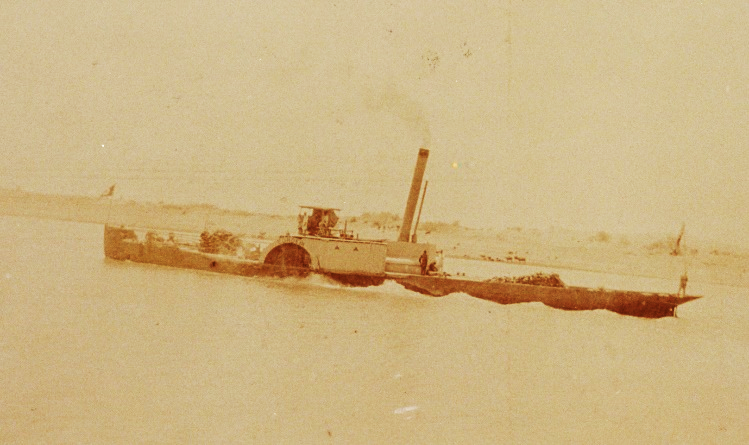
Bordein, one of Gordon's gunboats, later captured and taken over by the Mahdists.2
But large-scale riverine operations didn't come to Africa until the 1880s, when the population of Sudan rose in revolt against Egypt. The Nile had long been the main highway in the region, and General Gordon, the British commander in Khartoum, used his gunboats aggressively even while he was besieged by land. Some of them operated independently for four months, doing great damage to the Mahdist rebels while waiting for the relief expedition.3 Unfortunately, the expedition moved slowly, hindered by low water and a poor choice of boats. They arrived two days after the city fell to the rebels, who had killed all the defenders. The goal of the expedition had always been to evacuate Khartoum, so the Sudan was abandoned by the British for the next decade.

One of Kitchener's gunboats bombarding Mahdist positions
By 1896, the threat of foreign powers taking over the Sudan pushed the British into action. An expedition under Herbert Kitchener was sent to reassert Anglo-Egyptian rule. Gunboats led Kitchener's advance up the Nile, scouting and raiding the Mahdists. They had to be hauled through the cataracts by sheer manpower, with 2000 men taking an hour and a half to haul each boat through the 100-yard-long cataract. One of the gunboat officers was a Lieutenant by the name of David Beatty, who later went on to command the battlecruisers at Jutland. While Beatty commanded the Abu Klea, a shell landed in the gunboat's magazine and failed to go off, and he threw it over the side.4 Later, he ended up in command of the entire gunboat force, and made the acquaintance of a young cavalry officer by the name of Winston Churchill, which would prove vital to his later career. The gunboats themselves were critical in the final confrontation with the Mahdists at Omdurman, using their searchlights to protect the Anglo-Egyptian lines from infiltration the night before the battle, and later protecting the flanks of Kitchener's forces during the battle itself. The result was a massively one-sided victory, with 12,000 Mahdists killed at a cost of only 48 of the Anglo-Egyptian force.
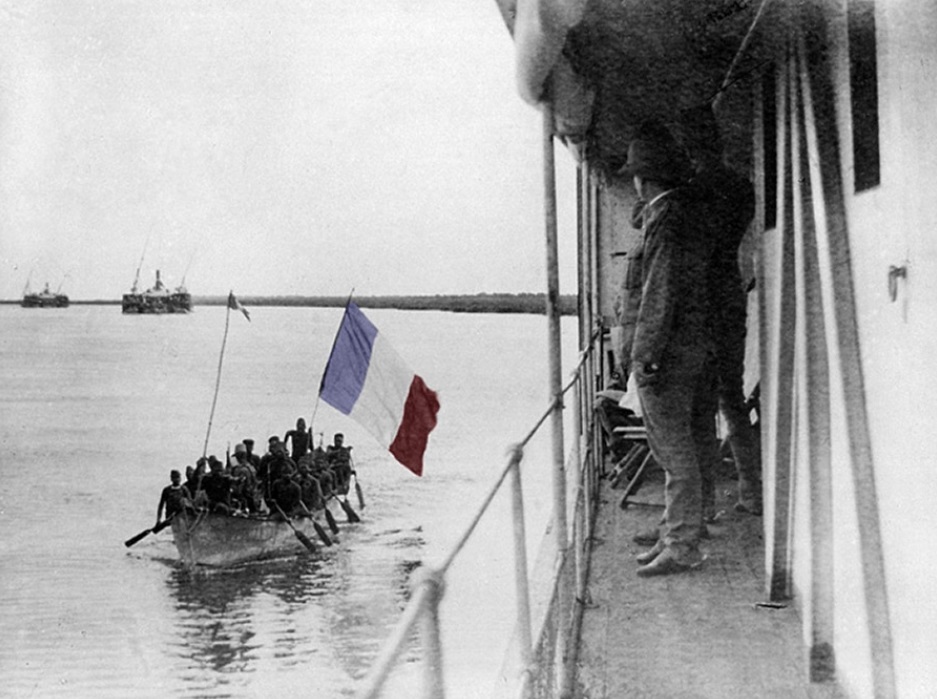
The French commander approaches Kitchener's gunboat at Fashoda
Omdurman sealed the fate of the Mahdi revolt, and soon the gunboats found themselves in another confrontation, this one a European one over control of the upper Nile. The French, attempting to stop the British advance upriver, had sent an expedition up the Congo River and overland to Fashoda, in modern South Sudan. The British, learning of the expedition, sent gunboats loaded with troops upriver to force the French to withdraw. Despite the presence of the gunboat Faidherbe, carried in sections all the way from the Congo and reassembled at Fashoda, the 120 Frenchmen were outnumbered 10 to 1 on land and even more at sea, leaving France with no choice but to back down during the ensuing diplomatic crisis. Fashoda would be the last time Britain and France found themselves on the brink of war, as the Entente Cordiale brought them together in the face of German aggression.
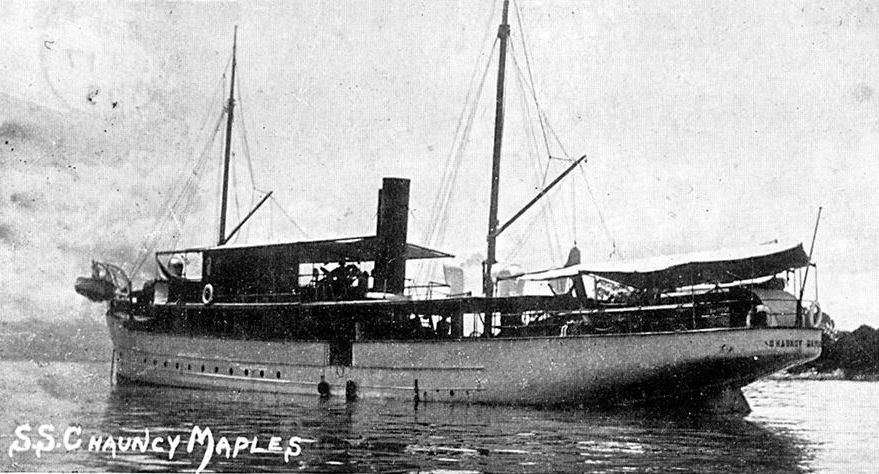
Chauncy Maples
That same German aggression would trigger the next major bout of riverine warfare in Africa. As soon as war broke out in 1914, the Allies began to attack German colonies worldwide, often by the best available transportation routes, rivers. In Kamerun, the most notable incident of the naval campaign was the German attempt to ram the gunboat HMS Dwarf with the revenue steamer Nachtigal. Unusually, the ramming connected, but Dwarf survived while Nachtigal was destroyed. Later, the Germans made several attempts to destroy Dwarf with improvised torpedoes, but all failed. On Lake Nyassa, the British were able to gain superiority easily, and one of their improvised gunboats, Chauncy Maples, is still in existence today.
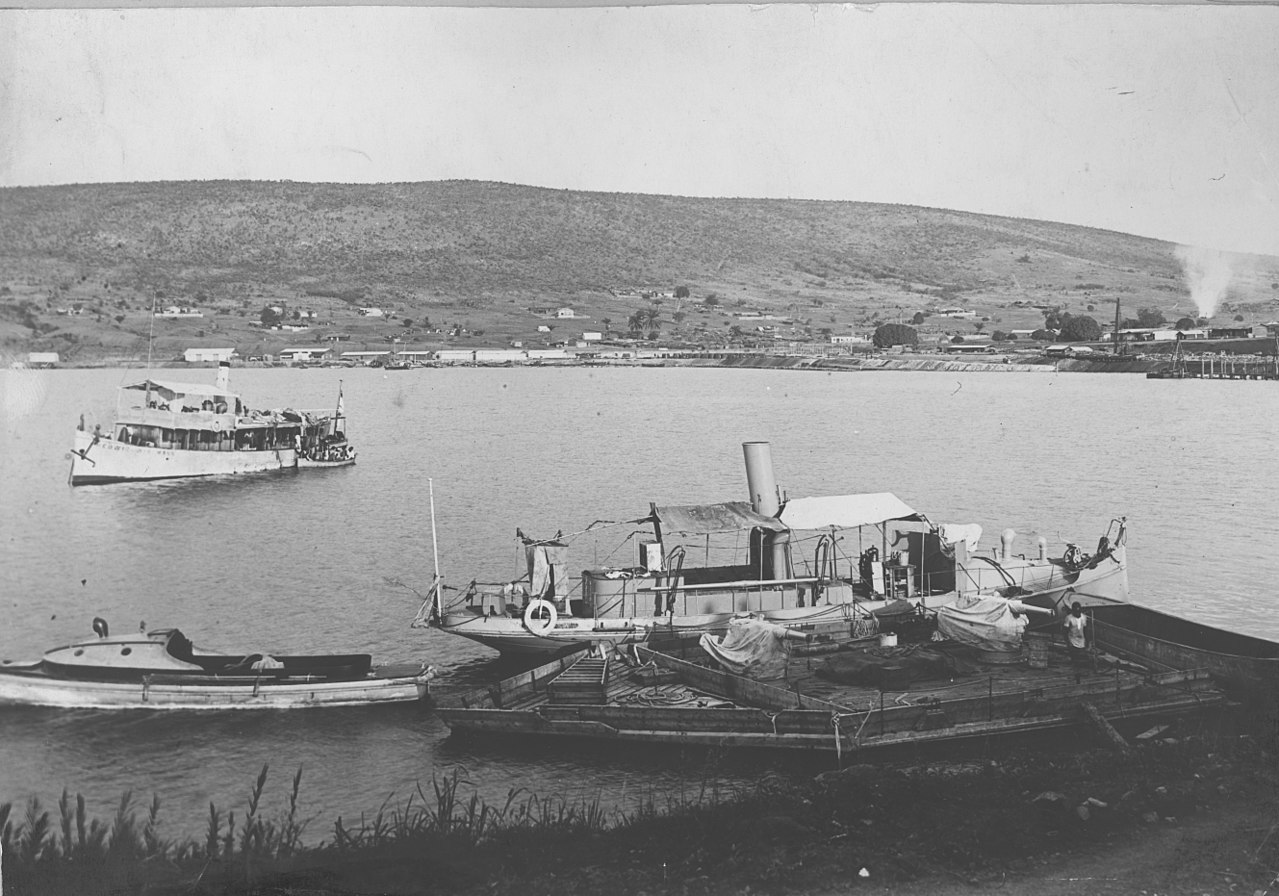
Lake Tangynika in WWI
Lake Tangynika was a different story. The Germans had two large gunboats, Kingani and Hedwig von Wissmann, on the lake, while neither the British nor the Belgians had any comparable vessels. This allowed the Germans to block any land offensives against German East Africa through the threat of amphibious operations across the lake. Worse, they were in the process of assembling a third vessel, Graf von Gotzen. The Allies couldn't assemble a prefabricated boat of their own, as the Germans could probably raid the assembly site and destroy it before it was ready to take to the water. The best alternative was to send smaller craft overland, which would be ready to fight almost immediately upon launch. A pair of motor launches were chosen, and an undistinguished and rather odd naval officer by the name of Geoffrey Spicer-Simson was chosen to command them thanks to his fluent German.

Graf von Gotzen being assembled
Spicer-Simson initially wanted to name his launches HMS Cat and HMS Dog, but the Admiralty refused and he settled on HMS Mimi and HMS Toutou instead.5 After completion they were shipped by sea to South Africa, arriving in early July of 1915. But the 1,500-mile journey overland would take five months, with the boats being moved through a combination of railroad, river, and a 100-mile stretch where a path had to be hacked out of the jungle and the boats dragged by steam tractors, oxen, and native porters. Finally, in early December, Mimi and Toutou were ready for action. Each was armed with a 3-pdr gun in the bow and a machine gun in the stern. Unfortunately, the boats weren't strong enough to bear the recoil of the 3 pdr unless it was pointing straight ahead, although their maneuverability compensated somewhat for this limitation, and they had enough firepower to sink Kingani on December 26th. She was subsequently salvaged and renamed HMS Fifi. The following February, Fifi and Mimi attacked and sank the Wissmann. Naval operations on the lake began to wind down, with the German bases taken by land, and Graf von Gotzen herself scuttled. She was subsequently raised and today is the only vessel of the Imperial German Navy still afloat and in service, although as a ferry instead of a warship.

M/V Liemba, formerly Graf von Gotzen, today
The last major riverine campaign in Africa was fought by the Portuguese Navy during the struggle to hold onto that nation's African colonies during the 1960s and 1970s. Angola, Mozambique, and Portuguese Guinea all revolted, and the Navy proved instrumental in fighting back against the insurgents in all three. In Angola, they patrolled the Zaire River and even took the fight into the remote eastern part of the territory, 1000 km from the sea. Almost as far inland was the Lake Nyassa flotilla that prevented infiltration into Mozambique, which required landing craft to be hauled 750 km inland, collapsing at least one bridge in the process. The biggest riverine theater was in Portuguese Guinea,6 where patrol boats often towed rubber rafts loaded with Marines through the network of rivers that griddled the territory. The war was one of ambush and surprise not unlike that the Americans were fighting in Vietnam, although the Portuguese were able to operate more effectively despite their opponents receiving several gunboats from Chinese and Soviet sources. Ultimately, despite a great deal of military success, Portugal withdrew from all three countries in the wake of the 1974 Carnation Revolution.
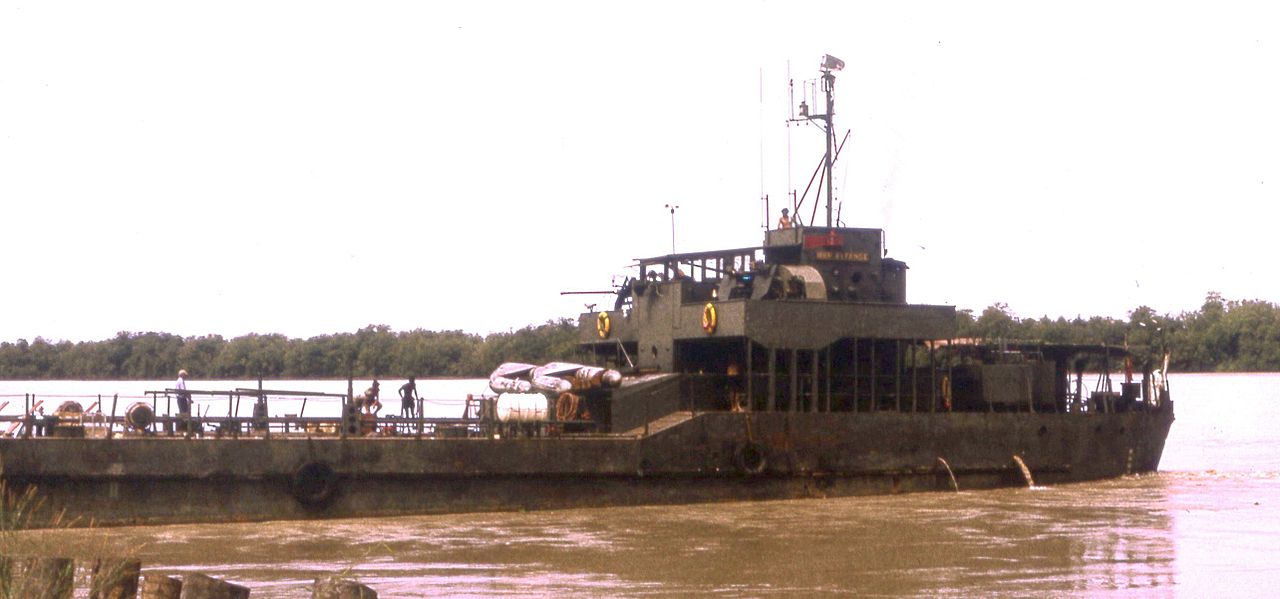
A Portuguese riverine craft on patrol in Portuguese Guinea
Africa has many of the world's great rivers, and as such has seen some of the great uses of riverine power. But the greatest river is to be found in South America, along with many other major rivers, and it is there we must turn next.
1 Unfortunately, this is primarily because I don't have good sources on this, so I'll have to restrict myself to the 19th and 20th centuries. ⇑
2 Astonishingly, Bordein has survived to the present and is currently being restored in Sudan. ⇑
3 There are two interesting notes about this, both relating to Canada. First, it was commanded by Garnet Wolseley, who had previously lead the expedition to put down the Red River Rebellion in Canada. Second, a number of Canadian voyageurs were hired to assist the force's move up the Nile. ⇑
4 One might speculate that this contributed to his lax attitude towards magazine safety. ⇑
5 These are more or less the French terms for Meow and Bow-Wow. ⇑
6 Today known as Guinea-Bissau ⇑

Comments
Wait, the Graf von Gotzen was scuttled? I thought she was sunk in battle by the RFA African Queen, K. Hepburn commanding.
Well, not really, but given the general lack of respect for riverine warfare in pop culture and history, it was worth a shout-out.
Beat me to it John Ü
Just make sure the Asia installment covers the role of those Vietnam river boats in the mission against Colonel Kurtz.
You think there's going to be only one installment for Asia? I'm currently working on Part 2 for China alone.
But yes, it's in my notes.